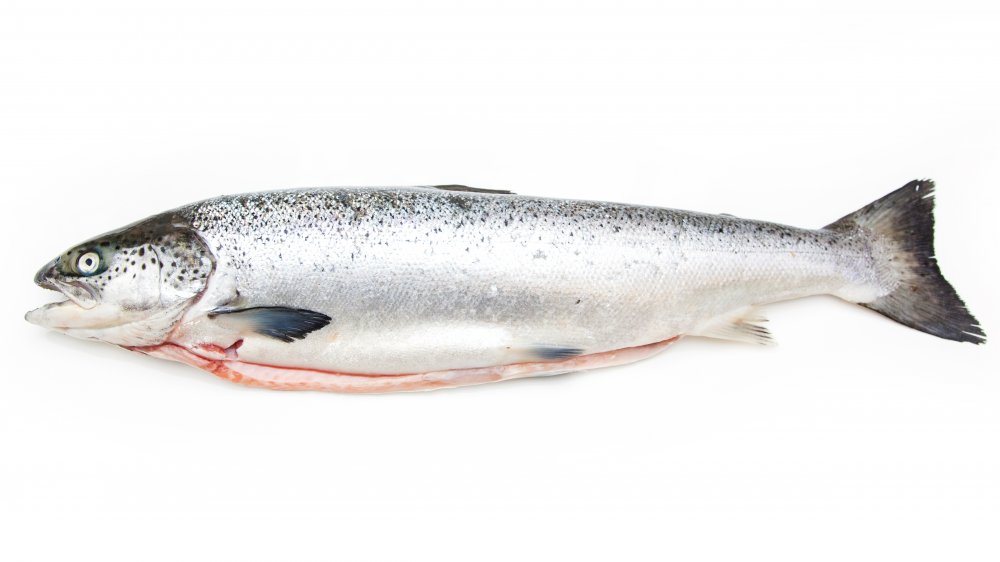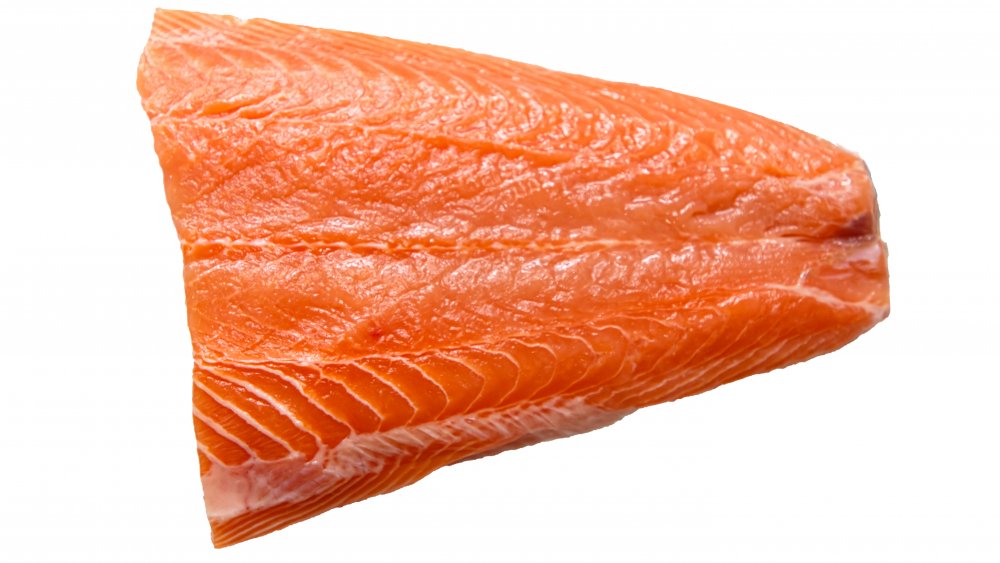This Is The Worst Part Of Salmon You Can Buy
Nowadays, almost every part of the salmon we buy at the store could potentially be on the menu, including the organs, if you're part of the "tip to tail" crowd (via Berkeley Wellness). Of course, that means lots of different pieces to try to turn into delicious meals. From a fish liver pâté to brined and steamed stomach, there are many, many options for the adventurous among us (via The Meat Eater). Or, if you're a little less adventurous, you can still use the extra bits to make some salmon cakes or a chowder (via Eat This, Not That). But if everything's potentially on the menu, are there still cuts of salmon that should be avoided?
According to Saveur, the worst cut to buy is a small fillet. The smaller the cut, the more likely you are to over-cook the fish and end up with a dry dinner that doesn't reflect the price you paid or the amount of time you put into cooking it. To avoid this pitfall, try buying much larger cuts when possible. This will protect the interior of the fish from drying out or getting over-cooked, and it will look much more impressive when you serve it. Skinny salmon fillets, however, aren't the only ones to avoid.
Why you shouldn't buy salmon tails
Most of us want our salmon to turn out tender, but there's one readily available cut that will thwart those plans more often than not, and it's the tail. According to New Orleans chef Michael Nelson, the entire fish is basically one big muscle, but the end of the tail is the part that works hardest (via Nola). This makes sense, since it's the tail that the fish uses to propel itself forward through the water. All those muscle fibers also make the tail meat the toughest part of the fish, however, and no one wants tough salmon.
Finally, if you're buying from a fishmonger, don't forget to thoroughly check the fish. If possible, sniff it before you pay, to ensure it's the freshest it can be. Fresh salmon eyes will be shiny, not shrunken, and the smell shouldn't be "fishy" at all.
It's best to buy and cook your salmon with the skin still on. The crispy skin texture is one of the best parts, but it also ensures that the layer of fat between the meat and the skin stays intact, which will cause any cut you choose to be juicer and more tender than if you had cooked it without the skin.

